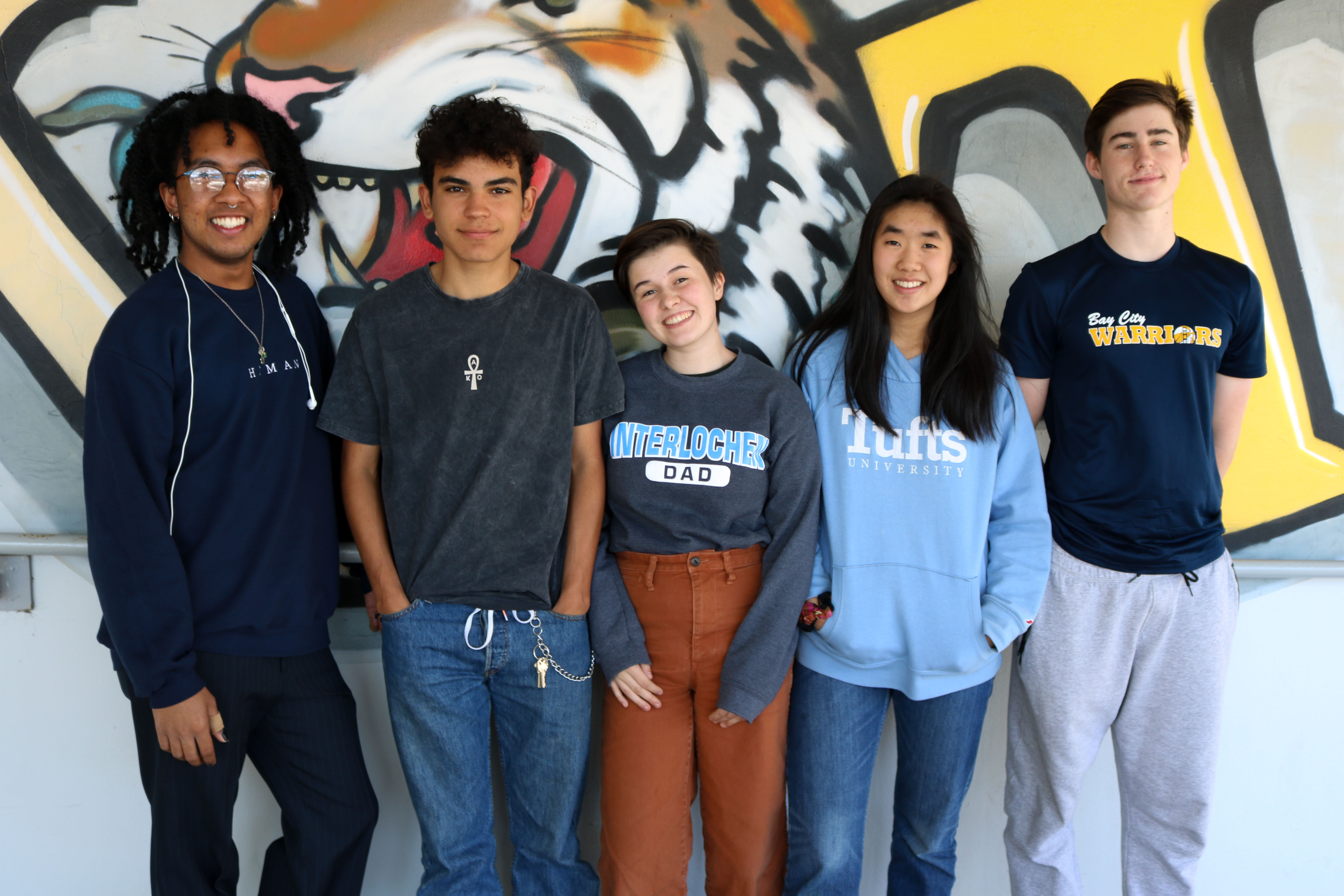
photo by Gabe Castro-Root
Lick-Wilmerding accepts up to 138 students per class each year. In addition to incoming Frosh, Lick will get maybe, maybe, three transfer students as sophomores or juniors. Those admitted as freshmen receive an extensive and thorough orientation to the transition to high school and to Lick culture.
However, Lick still does not provide transfer students with an orientation, info session, or pre-school meeting. As a junior transfer this year, I felt like I was thrown into the deep end and told to start swimming. I was expected to put my foot in the circle when I didn’t even know where the circle was.
What are the challenges for the admissions office and school in accepting transfers? What are the challenges transfer students face?
Min Yoo, Associate Director of Admissions, known by Lick-Wilmerding students as Mr. Min, spoke to some of the challenges Lick faces in admitting transfer students. “Every transfer student has a different situation,” he explained. “One of the big challenges in all admissions is just how different each applicant is, particularly with transfer students how different each case is. Alongside this other piece: we don’t know if and when there’s going to be an opening.”
I recognize what Yoo is saying here. In my own family, transferring out of the tiny public school I attended last year was a difficult process. As a rising junior, applying to private and even some public schools was a longshot because an opening was not guaranteed.
Yoo mentioned that oftentimes transfer families are unfamiliar with high schools in the San Francisco Bay Area. Transfer families might have just moved here or left the Bay Area years ago and just returned.
Generally, rising freshmen know about Bay Area high schools. They have done research, talked with friends or family who attended the school and know the schools’ reputations. On the other hand, transfer students’ knowledge is usually spotty.
Lick, in particular, has graduation requirements and courses that are unique, such as Design & Technology (D&T), Contemporary Media and Art (CMA), Body Mind Education (BME) and Public Purpose Program (PPP) courses, many of which are fulfilled freshman year. This raises the question: how does a transfer student fit in or fulfill classes that are required for incoming Frosh? Yoo sums up the issue by asking, “How do we replicate this experience that every student is supposed to have if they come to Lick as a Junior?”
The main issue for admissions officers, in helping transfer students transition, is getting students caught up with what they “missed” while also accommodating each transfer’s unique situation.
Transfers also need to learn the ins and outs of the school’s curricular culture. Upon coming to Lick, teachers referenced the “Habits of Mind,” lessons learned in CMA and made jokes about “PPP,” none of which I understood. It was like the whole school was in on a joke that I wasn’t and no one bothered to tell me.
These are relatively new problems that admissions and the school is tackling. There used to be not more than two transfers a year, so helping transfers could be highly individualized. Yoo said in the past, “We got maybe one or two transfer students joining our community every year, but now that [the number is] increasing, although not a huge community yet. I don’t think it’ll ever be a huge number of [transfer] applicants. Because we do have more, we’re trying to do a lot more around what that experience is like. It’s something that we’re trying to be a lot more thoughtful around.” This year there are five transfers: two juniors and three sophomores.
Hannah Kloninger-Stever ’21, the other junior transfer student to enter Lick this fall, says that like me, she felt a little lost. “Although I shadowed at Lick twice to make sure that I really enjoyed the school and the community, I still had a little bit of difficulty finding my way around the campus and making sure that I knew where everything was.” She says that having “an opportunity for transfer students to have an orientation would make that transition quite a bit smoother.”
An orientation would have helped. I was not told that I had to pick up my textbooks, or even that I had textbooks. I had to have a classmate show me where the business office was. Even something as simple as getting lunch seemed daunting to me. Particularly, seeing the long lines and having to enter a pin that my advisor had given to me, but I wasn’t really sure what to do with it.
Ari Gonzáles Silas ’20 is an LWHS Admissions Intern (LWAI). One thing LWAIs are responsible for is answering the questions of students who come to shadow at Lick. When it comes to transfer students, Gonzáles Silas says, “I don’t have the information on what requirements apply to transfers and so I definitely have freaked-out transfers before by listing the classes Frosh are required to take.”
I remember my shadow day. Both of the students who were shadowing the same day as me were eighth-graders and the student I shadowed was unsure about what classes I would have to take as a junior. The student even thought I was an eighth-grader at first. Gonzalez Silas says that the transfer students don’t “feel super integrated into the regular eighth-grader admissions process” and as a transfer student, I agree.
Before the first day of school, I had only been on campus beyond the front desk once and when the first day of school came, I had to have School Receptionist Molly French write out my class schedule and the rooms in which each met. I didn’t know my way around campus at all. Many of my teachers didn’t know or didn’t remember that they had a transfer student joining their class and even something as simple as finding someone to eat lunch with every day was a struggle. Despite all of these adversities, there is a light at the end of the tunnel for transfer students.
Director of Admissions Cristal Ogletree speaks of plans in the works to help accommodate transfer students. “This year we made an effort to connect grade-level deans and advisors with incoming transfer students and their parents to help answer any questions and we also offered the option for a Peer Connect mentor for each incoming transfer student, another program which has in the past only paired incoming 9th graders with older students for mentor/mentee pairings.”
I really appreciated this opportunity to have a mentor, however, it might have been nice if all the transfer students were in one group so that we could get to know each other as well.
Ogletree continues, “We try to be as communicative as we can with newly enrolled transfer students and their parents and encourage them to reach out to us with any questions or concerns. Having a transfer student-specific orientation is something for us to think about, we aim to improve the process and experience for students each year and appreciate the feedback!”
Despite the many challenges that both transfer students and administrators face, when all is said and done, one thing remained clear: admissions officers want transfer students at LWHS and transfer students are happy to be here.
Yoo said, “It’s not that we don’t see [transfer students], we’re thinking through things. We’re trying to figure it out and we would love to be in conversation with you [transfer students].”
Ogletree echoed this as well, sending this message to the transfer students: “We’d love to hear your experience and what kind of support and guidance you would like!”
At the end of the day when I asked Kloninger-Stever how she feels about her decision, she reflected again on her shadow visit. “When I shadowed at Lick-Wilmerding I was overwhelmed by how nice everyone was and how accepting and exciting the community seemed to be and I have found that true going here as well for these past two weeks.” I wholeheartedly agree and am happy to be putting my foot in the circle just like every other tiger here at Lick-Wilmerding High School.







